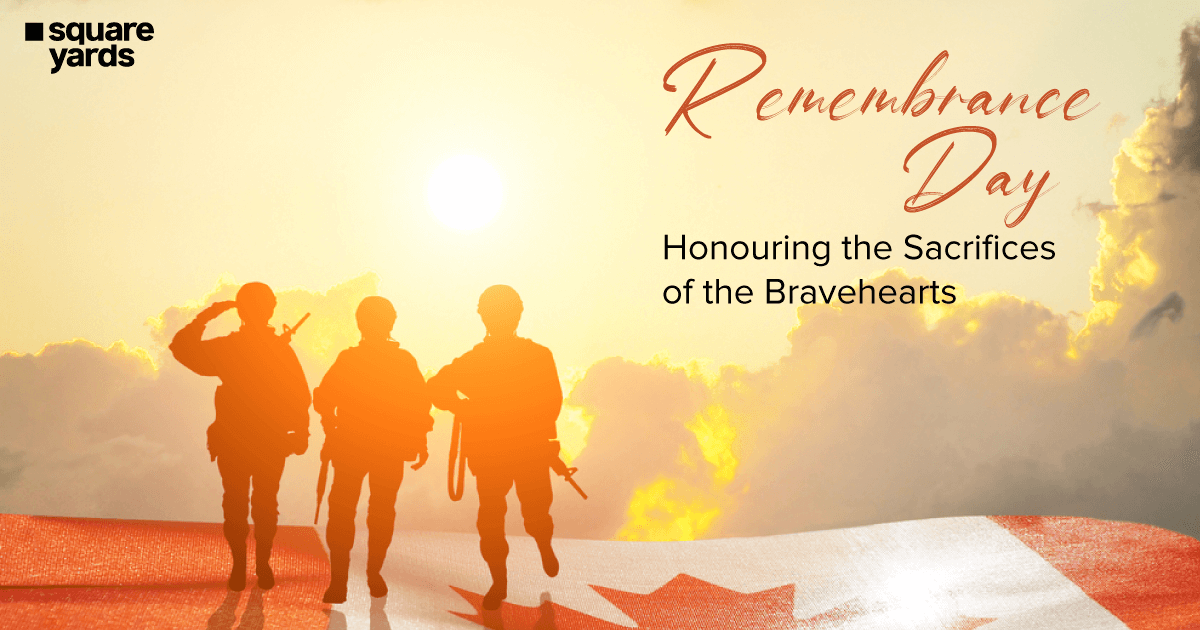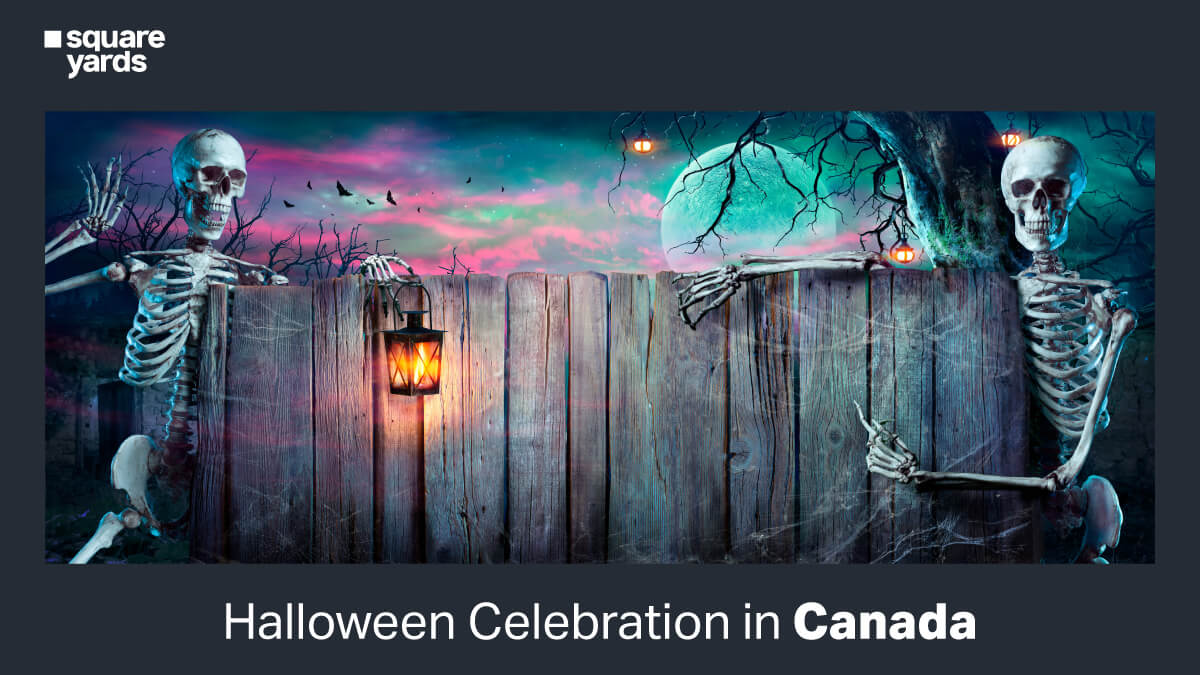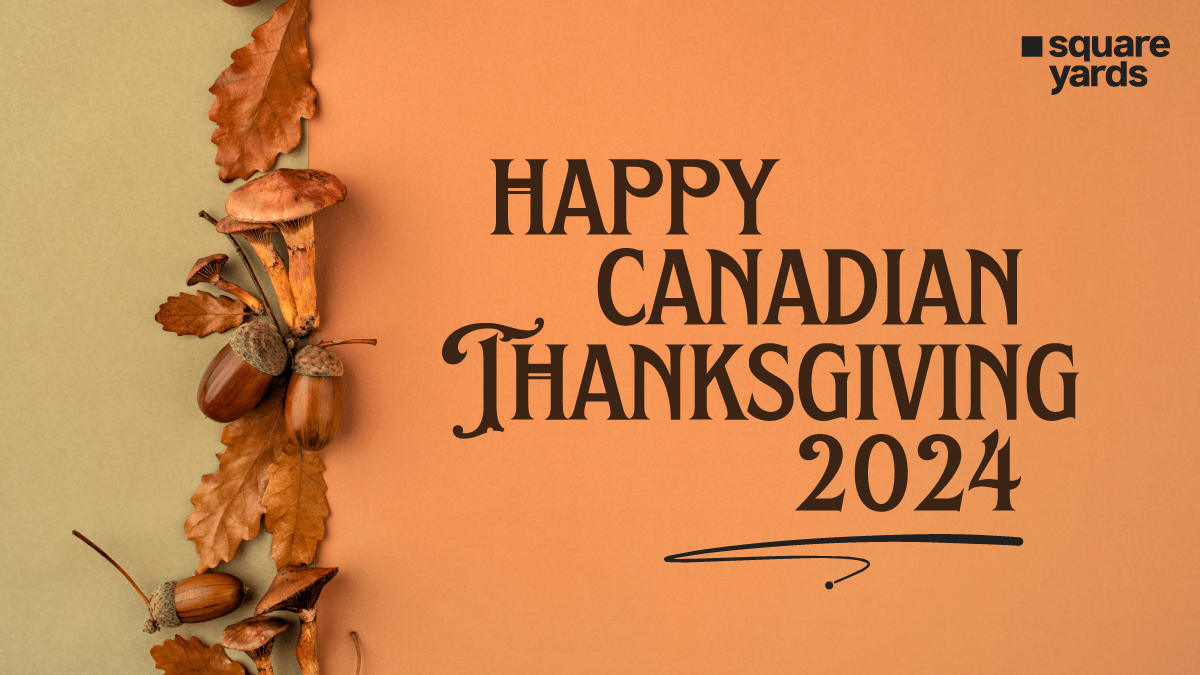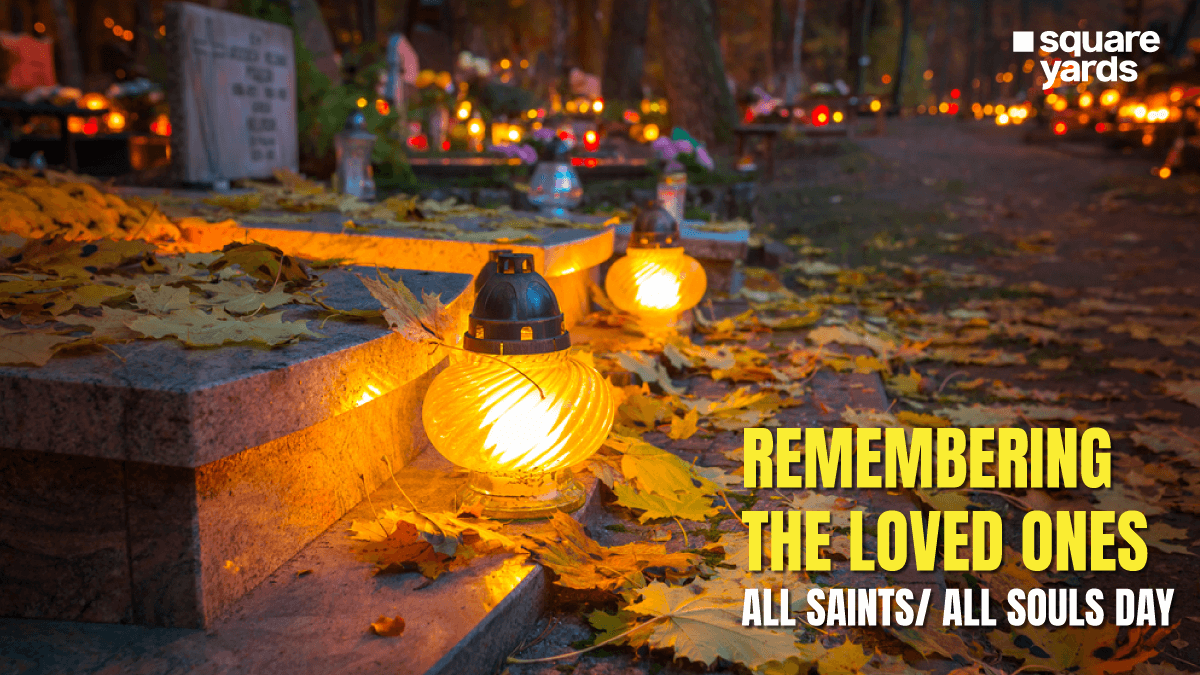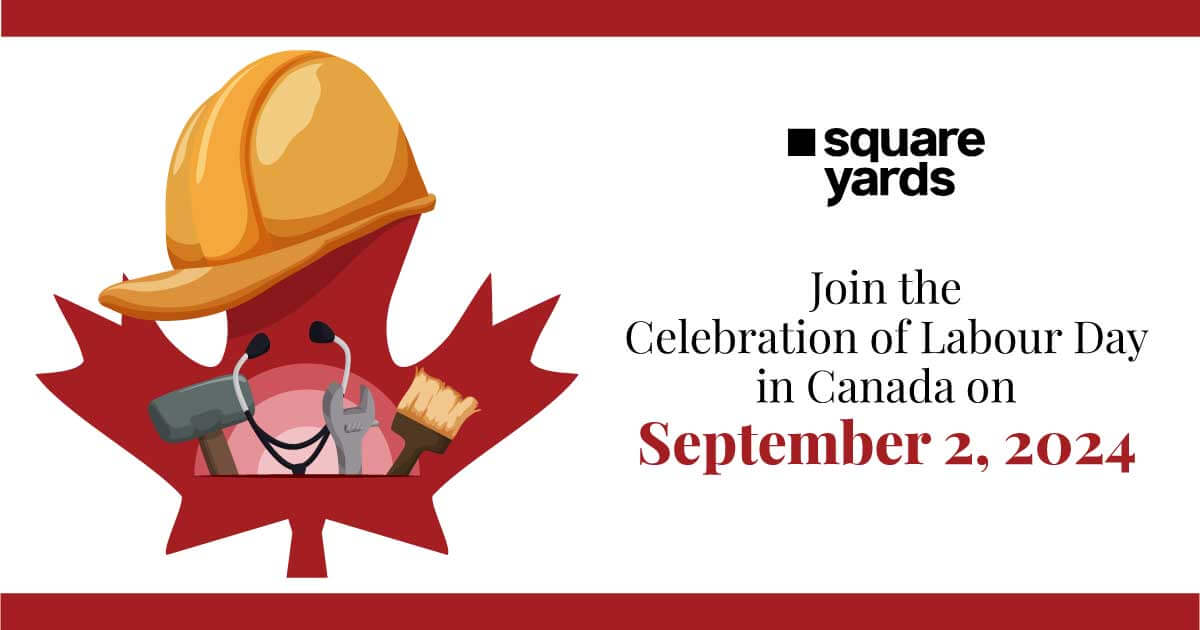Canada is synonymous with ice hockey, as people always discuss the game when referring to Canada. Ice hockey has become a popular sport, and a growing number of countries are showing interest in this game. However, the game was initially established in Canada and is a part of the country’s legacy. The Canada ice hockey game is the national sport of the country. The game was first started in Canada and has since seen its journey to what the game has become now.

The game has reached people across different geographical regions, and people from other nations have also started showing interest in ice hockey. Therefore, several ice canada ice hockey team from European countries and the United States travelled to Canada during the National Hockey League to participate in the event. If you are interested in knowing more about the Canada Ice Hockey Game, this is the right place for it. We will discuss every important game aspect here, so read on.
History of Ice Hockey
This competitive game of ice hockey was developed in Canada in a city called Montreal. The first indoor ice hockey was played on 3rd March 1875, and the game became even more popular. Several essential aspects of the game that were established in 1875 still exist. For example, the length of the ice rink today is the same as it used to be in 1875. However, the game has undergone significant evolution and also experienced several changes in the format and the rules that govern it as well. In 1892, the iconic Stanley Cup came into existence. It was called the Dominion Hockey Challenge Cup then. It is one of the most prestigious rewards in ice hockey.

The game was inspired by another game called Bandy, played in countries like England during the 19th century. The game also has a few elements of another game, lacrosse. The Dutch population also used to play several games that were similar to present-day ice hockey. When the game was established in Canada, it instantly became popular. There were more than 100 ice hockey teams just within Montreal. Several tournaments were organised, which made the sport even more popular. People from all over the country used to participate in huge numbers.
In 1910, the National Hockey Association was formed to take care of the Canada ice hockey game. The NHA was responsible for bringing standardisation to the game and making it a full-fledged professional sport. They defined the game’s rules and created three periods of 20 minutes each during which the game would be completed. The NHL expanded to the United Nations and made the game famous in the US territories as well. As several European countries were intrigued by the idea of ice hockey, they started to join the bandwagon too.
Ice Hockey Origins
Ice hockey has its roots in Canada, dating back to the late 1800s. The game was invented in Montreal in 1875, based on a version of field hockey typical in Europe at the time. It immediately became popular in Canada, and by the late 1880s, it was being played in schools and universities nationwide.
The Amateur Hockey Association of Canada, the world’s first organized hockey league, was founded in Montreal in 1886. Professional ice hockey was established in Canada by the 1890s, and the National Hockey Association, the first professional, hockey league, was organized in 1910. Nowadays, ice hockey is a national sport in Canada and the country’s most popular winter sport.
Canadian Hockey Teams
To understand the ice hockey game, you need to know about the Canada ice hockey team that play the game, along with the best Canada ice hockey team. Let’s look at the Canada ice hockey team that are a part of the NHL.
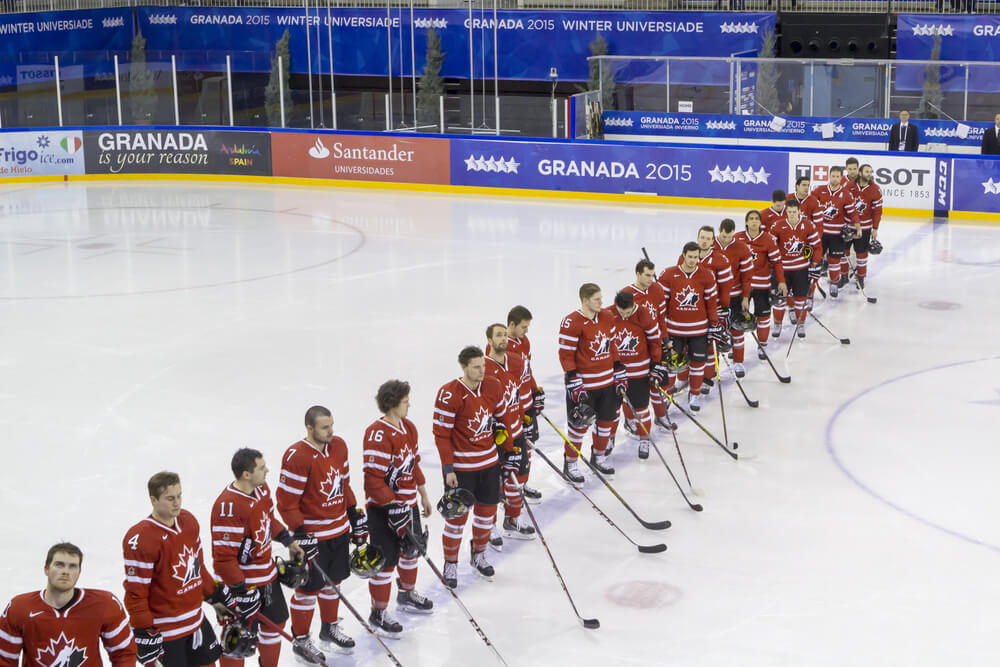
- Calgary Flames : The team’s home arena is in Scotiabank, Saddledome. The team is identified by combining colours like red, black, gold and white. The team was started in 1972 and was known as the Atlanta Flames then. The team also won the Stanley Cup in 1989. The NHL has two franchises in the Alberta region: the Calgary Flames and the Edmonton Oilers. Hence, a match between these two teams is called the ‘Battle of Alberta’.
- Montreal Canadiens : The team’s home arena is Bell Centre, and you can find the players of the team dressed in a combination of red, white and blue. They have been a part of the NHL since its inception, as the team was started in 1917. The locals also know the team as Les Habitants, and they have a reputation for winning the Stanley Cup 24 times.
- Toronto Maple Leaves : You can recognise the Toronto Maple Leaves by their blue and white gear. Scotiabank Arena is their home arena. The team was started in 1917 and has seen great progress ever since. The Maple Leaves have won the Stanley Cup 13 times. However, they won their last cup in 1967 and have not won any major tournaments recently. They are one of the rich teams and have a fan base worldwide, given their legacy.
- Ottawa Senators : With their home arena in the Canadian Tire Centre, the Ottawa Senators are very popular in Canada. You can recognise their team with colours like red, black, gold and white. They were a prominent player in the 20th century as they had won around 11 Stanley Cups. The team had to wrap up its operations in 1934 due to a lack of proper funding. However, they came into existence again in 1992.
- Winnipeg Jets : The combination of blue, red, and white represents the Winnipeg Jets. The home arena of this team is Bell MTS place. Earlier, they were a part of the World Hockey Association. They joined the NHL in 1979. The team was sent to Arizona momentarily but returned to Winnipeg in 2011. However, they have not won the Stanley Cup yet, but they are known for their history and legacy.
- Edmonton Oilers : The colours copper and blue represent the Edmonton Oilers. Rogers Place is their home arena, and they have won 5 Staley cups. Most of their games are conducted at Rogers Place. The team joined the NHL in 1980. Earlier, it was a part of the World Hockey Association. The team has had some of the most legendary ice hockey players like Wayne Gretzky.
- Vancouver Canucks : Vancouver Canucks is another team that has its home arena at Rogers Arena. The colour of their uniforms is a combination of blue, green and white. They are considered one of the best teams participating in the NHL. However, they haven’t won the Stanley Cup yet but reached the final round multiple times.
Origins of the Stanley Cup
The Stanley Cup is an illustrious prize presented each year to the triumphant squad of the National Hockey League (NHL). Owing to its status as the longest-standing trophy to be bestowed upon a professional sports franchise in North America, it is one of the most celebrated and coveted awards in all sports.
The trophy was originally issued in 1892 by Lord Stanley of Preston, then the Governor General of Canada. He had become an avid fan of hockey while living in Canada and wanted to create a challenge cup that would be awarded to the best team in the country. He purchased a silver bowl for just 10 guineas (roughly $50 in today’s money) and had it inscribed with the words “From Stanley of Preston, Lord Stanley, Governor General of Canada, 1892.
Since then, the Stanley Cup has become a symbol of excellence in the sport of hockey and has been awarded to the NHL champions every year since 1926. The trophy has gone through many changes over the years, including the addition of a “keeper” ring in 1948 to replace the original bowl. The current design features a silver bowl atop a five-sided pedestal made of mahogany, with the names of each of the winning teams inscribed on the side.
The Stanley Cup is also steeped in tradition. For example, it is believed that the first team to win it, the Montreal Amateur Athletic Association, celebrated by drinking champagne from the bowl of the trophy. Additionally, it is a tradition for members of the winning team to take turns drinking champagne out of the bowl, a tradition that continues to this day.
The Stanley Cup is a symbol of excellence in hockey and has become a cherished symbol of victory for teams and fans alike. It is one of the most recognizable trophies in all of sports and is a testament to the hard work, dedication, and skill of the teams that fight for it each year.
National Hockey League (NHL)
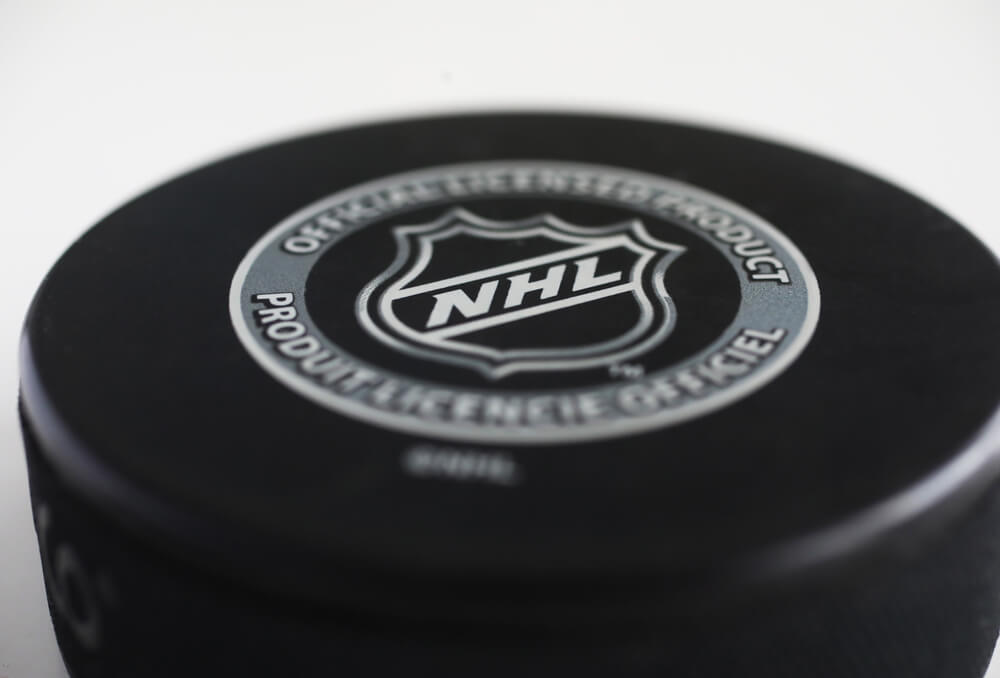
The National Hockey League, or the NHL, is one of the most important tournaments for ice hockey. Currently, 31 franchises are a part of the NHL, seven of which are Canadian. All of these 31 teams come together to fight for the Stanley Cup. The cup is the most prestigious award in the field of ice hockey. The Stanley Cup was named after the Governor General of Canada. The game starts around October and goes on till June. The league is divided into the main season and a series of playoffs. The top 16 teams battle it out during the playoffs, and a huge crowd across the country attends these games.
Ice Hockey Game: Rule Changes
Ice hockey in Canada has evolved over the course of years, as rules and regulations have been implemented to help improve the game. For example, in the early days of the sport, body checking was allowed, but it has since been prohibited due to safety reasons. As the game has become more popular, the rules have changed to create a more inclusive and exciting experience for players, such as allowing for helmets and face masks. The introduction of the blue line and the two-line pass also changed the way the game was played, as it allowed for more creative play. Additionally, overtime rules have been adjusted to ensure that games can be decided in a timely manner, while the shoot-out rule was implemented to make sure that games do not end in a tie. This brief outlines the various changes in the rules of ice hockey in Canada over the years, which have helped to make the game safer, more inclusive, and more exciting.
-
The 1920s and 1930s
Joe Malone’s an astounding feat of netting seven goals in a single game in 1920 amazed spectators and set the precedent for a new era of hockey. George Hainsworth was the first to be bestowed the honour of being presented with the Vézina Trophy, and Foster Hewitt’s first radio broadcast of a game in March 1923 marked a momentous transition in the dissemination of hockey.
Frank “King” Clancy, Aurèle Joliat, Bill Cook, Lester Patrick, Charlie Conacher, and Nels Stewart were all illustrious players of the period, but Howie Morenz was the most conspicuous of them all, and Eddie Shore the most incontestable defender. The Ottawa Senators, meanwhile, reigned supreme, claiming six league championships and four Stanley Cups before they disbanded in 1934.
-
The NHL in the 1940s and 1950s
The Toronto Maple Leafs, magnificently led by Walter ‘Turk’ Broda, Ted Kennedy, Syl Apps, and Max Bentley, reigned supreme in the 1940s, their prowess culminating in a splendid six Stanley Cup victories in a remarkable ten-year span. Maurice “Rocket” Richard, however, of the Montreal Canadiens, surprised the league with his remarkable offensive capabilities, most prominently evidenced when he achieved the extraordinary feat of scoring 50 goals in 50 games during the 1944–45 season, including a sensational five goals and three assists in a single match.
The Detroit Red Wings, guided by the magnificent Gordie Howe, Ted Lindsay, Red Kelly, and Terry Sawchuk, seized the spotlight in the early 1950s, with Howe claiming five scoring championships and four Hart Trophies in the decade. Yet it was the Montreal Canadiens of the mid-1950s who created a dynasty of unparalleled might, boasting the legendary Maurice and Henri Richard, Jean Béliveau, Bernie Geoffrion, Jacques Plante, Doug Harvey, Dickie Moore, and many others, their supremacy culminating in a record-breaking five consecutive Stanley Cup triumphs.
-
The 1960s and the Expansion of the NHL
The long-awaited triumph of the Chicago Blackhawks in 1960–61, led by their brilliant triumvirate of Stan Mikita, Bobby Hull, and Glenn Hall, ended a twenty-three-year Stanley Cup drought for the Windy City. Subsequently, the Toronto Maple Leafs added four more cups to their collection, and the Montreal Canadiens embarked on an impressive streak of five consecutive titles in the ’60s. In 1967, the NHL spread its wings and descended into six American cities, including Los Angeles, St. Louis, Minnesota, Pittsburgh, Oakland, and Philadelphia, with the Vancouver Canucks joining the league in the 1970–71 season, followed by the Buffalo Sabres.
-
Change and Challenge in the 1990s
The sport was forever changed in April 1999, when the incomparable Wayne Gretzky, lauded as the greatest to ever grace the game, chose to retire from the sport. His departure came after a tumultuous decade where sky-high salaries caused financial strife for multiple teams, resulting in the Québec Nordiques relocating to Denver in 1995 and the Winnipeg Jets being sold to a Phoenix group in 1996.
-
Fiscal Challenges in the 2000s
As the NHL expanded to thirty teams, the financial requirements of Canadian teams to compete with their American counterparts became increasingly taxing. Toronto was the only Canadian team to consistently maintain sell-out crowds, while the remainder of the franchises struggled to remain afloat. As a result, the Ottawa Senators’ management announced in 1999 that the team would be sold to the United States unless the federal government provided financial aid. In January 2000, a proposal was made to offer annual aid to Canadian hockey teams until 2004, it was quickly retracted due to vocal criticism. Ultimately, the Senators were able to still remain in Canada.
-
Player Lockout 2004-05
The impasse between the NHL Players’ Association and team owners in 2004 resulted in an unprecedented lockout, lasting a staggering 310 days, and putting an abrupt halt to the beloved sport of ice hockey. The consequence of this bad blood was a salary cap of $39 million (US) per team and a drastic reduction in players’ pay. A sombre outcome of this dispute was the cancellation of the Stanley Cup playoffs, depriving its fans of the cherished annual tradition for only the second time in its history, and leaving the iconic cup unawarded.
-
Canadian Teams and the Stanley Cup Since 1993
The Montreal Canadiens’ enthralling triumph over the Los Angeles Kings in 1993 was the last instance of a Canadian team holding dominion over the much-coveted Stanley Cup. The following year, the valiant Vancouver Canucks were presented with a valiant opportunity to continue the streak but were ultimately undone by the New York Rangers. Since then, four Canadian franchises have robustly progressed to the Stanley Cup final, only to be denied by a victorious American team. In 2004, the Calgary Flames were defeated by the Tampa Bay Lightning; the Edmonton Oilers met their match with the Carolina Hurricanes in 2006; the Ottawa Senators were humbled by the Anaheim Ducks in 2007; and the Vancouver Canucks were vehemently vanquished by the Boston Bruins in 2011. This series of defeats, especially the last, was a difficult pill to swallow for many Canadian hockey fans. However, nothing could have prepared them for the scenes in Vancouver after the Canucks’ game seven loss in the 2011 Stanley Cup final. Unchecked destruction ensued, with cars and businesses suffering extensive damage. As of June 14th, 2013, Vancouver police had recommended 1086 charges against 325 suspects in relation to the riot.
-
Labour Strife in the NHL (2012)
The contention between the NHL and its players’ union over the percentage of hockey-related revenues allocated to the players in the 2012-13 season saw the entire landscape of professional hockey drastically change. As the two sides remained at odds, the impact of the dispute was felt throughout the league, with 510 regular season games, the NHL All-Star Game, and the 2013 Winter Classic between the Detroit Red Wings and the Toronto Maple Leafs canceled. But a resolution was eventually found, with the two sides agreeing to a 50-50 split of hockey-related revenues, thus restoring peace and ensuring the future of the game.
Significance of Ice Hockey in Canada
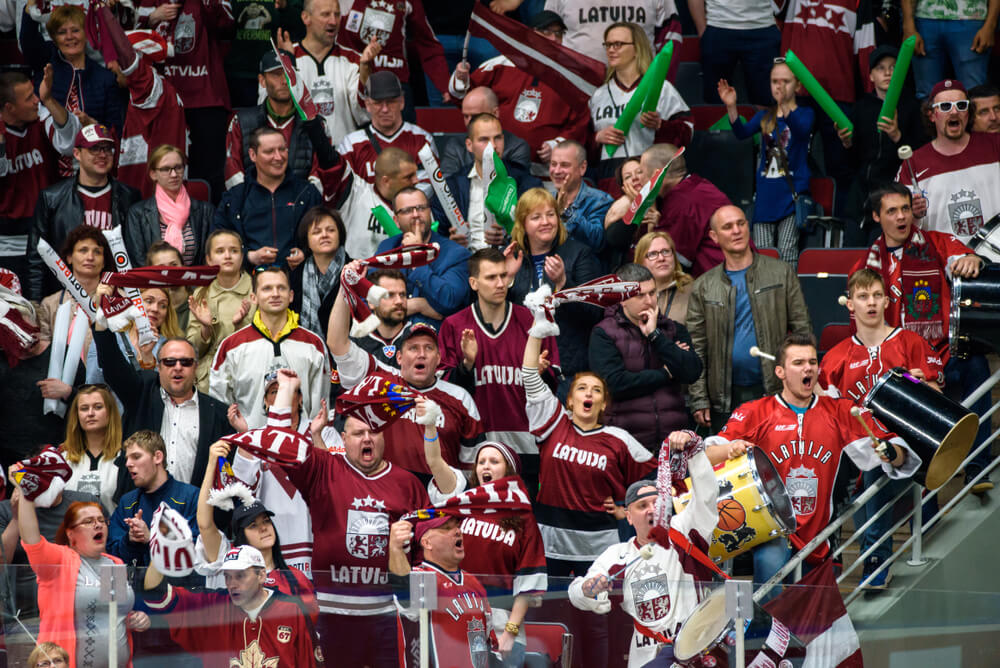
Canada is the home ground of ice hockey. Hence, the country gives special importance to the game compared to the other games played in the country. Several Canadian hockey teams were formed when the game was conceptualised. Even today, multiple Canadian hockey teams participate in the game nationally.
Ice hockey is a part of Canada’s culture. Hence, people follow it with great interest, and all the tournaments conducted in the country receive huge traction from the local audience. Apart from these huge tournaments, the Canadian public flock together around a frozen pool and play the game for recreation during the winter season in the country. When the game became a part of the Winter Olympics, it was a proud moment for the country and its citizens. Also, the country becomes inactive during the Winter Olympics as people binge-watch the games.
Conclusion
Ice hockey is a part of the cultural fabric of Canada. If you are in Canada, you should attend one of these events to understand the hype around the game. You can also watch the game on television and try to enjoy it if you cannot visit Canada.
You May Also Read
| Famous Canadian Sports | Canadian Dollar Bingo Game |
| Best Theatres in Toronto | Calgary attractions |
Frequently Asked Question (FAQs)
What countries play ice hockey?
Ice hockey is Canada's official winter sport and possibly the country's most popular sport. Hockey is also widely played in America and Europe, particularly in countries like Russia, Finland, and Sweden. Around a million registered athletes compete in leagues throughout the world on a regular basis.
How many NHL teams does Canada have?
Canada currently has seven NHL teams based in the country. They are the Calgary Flames, Oilers, Ottawa Senators, Maple Leafs, Canadiens, Canucks, and Winnipeg Jets.
What is Canada's most famous hockey team?
Montreal Canadiens have often been deemed the most famous hockey team in the country.
Who invented ice hockey?
James Creighton developed modern ice hockey that is played in teams. The game gained much popularity in the latter half of the 1800s.
How long is a hockey game?
A hockey game goes on for an hour. It is divided into three periods of 20 minutes each. Hence, the break duration also defines the game's length.
Why is hockey most popular in Canada?
Ice hockey is popular in Canada as it was established there. Also, out of 31 teams in NHL, seven teams are from Canada, and that builds much excitement among the people.
What was hockey originally called?
Hockey has taken inspiration from several European games. Some of these games are called a hurley, Bandy, etc.
What are the three types of hockey?
The three types of hockey are field hockey, ice hockey and sledge hockey.


